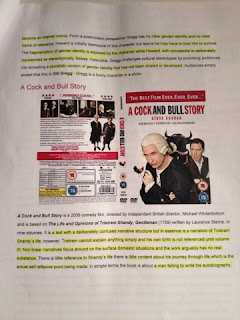JEAN BAUDRILLARD
In Simulacra and Simulation, introduced the concept that reality or the principle of the "real" is short-circuited by the interchangeability ( the quality of being capable of exchange or interchange) of signs in an era whose communicative (Relating to the conveyance or exchange of information) and semantic acts (Relating to meaning in language or logic) are dominated by electronic media and digital technologies.
Baudrillard proposes the notion that, in such a state, where subjects are detached from the outcomes of events ( but still aware of them - political, literary, artistic, personal, or otherwise), events no longer hold any particular sway on the subject nor have any identifiable context; they therefore have the effect of producing widespread indifference, detachment, and passivity in industrialised populations (effected by but unable to change or alter). He claimed that a constant stream of appearances and references without any direct consequences to viewers or readers could eventually render the division between appearance and object indiscernible (impossible to distinguish), resulting, ironically, in the "disappearance" of mankind in what is, in effect, a virtual or holographic state, composed only of appearances (with no substance).
Simulacra and Simulation
Simulacra and Simulation is famous for its discussion of symbols & signs, and how they relate to contemporaneity (modern day life). Baudrillard claims that our current society has replaced all reality and meaning with symbols and signs, and that human experience is of a simulation of reality
| (imitating the behaviour of a situation or some process by means of something suitably analogous - comparable / similar in certain respects, Similar or alike in such a way as to permit the drawing of an analogy- comparison. - imitation of reality in a hyperbolised state) |
Moreover, these simulacra are not merely mediations of reality, nor even deceptive mediations of reality; they are not based in a reality nor do they hide a reality, they simply hide that anything like reality is irrelevant to our current understanding of our lives. The simulacra that Baudrillard refers to are the significations and symbolism of culture and media that construct perceived reality, the acquired understanding by which our lives and shared existence is and are rendered legible; Baudrillard believed that society has become so saturated with these simulacra and our lives so saturated with the constructs of society that all meaning was being rendered meaningless by being infinitely mutable. Baudrillard called this phenomenon the "precession of simulacra".
- The first stage is a faithful image/copy, where we believe, and it may even be correct, that a sign is a "reflection of a profound reality" , this is a good appearance, in what Baudrillard called "the sacramental order". (we believe what we see is real or a reflection of what is real)
- The second stage is perversion of reality, (alteration of something from its original cause state or meaning) this is where we come to believe the sign to be an unfaithful copy, which "masks and denatures" (alters the natural qualities of) reality as an "evil appearance—it is of the order of maleficence" (doing wrong or causing evil). Here, signs and images do not faithfully reveal reality to us, but can hint at the existence of an obscure reality which the sign itself is incapable of encapsulating (enclosing or expressing) (EG: body image in the media using editing software or ads with fake outcomes?).
- The third stage masks the absence of a profound reality, where the simulacrum pretends to be a faithful copy, but it is a copy with no original. Signs and images claim to represent something real, but no representation is taking place and arbitrary images are merely suggested as things which they have no relationship to. Baudrillard calls this the "order of sorcery", a regime of semantic algebra where all human meaning is conjured artificially to appear as a reference to the (increasingly) hermetic truth (Insulated or protected from outside influences).
- The fourth stage is pure simulation, in which the simulacrum has no relationship to any reality whatsoever. Here, signs merely reflect other signs and any claim to reality on the part of images or signs is only of the order of other such claims. This is a regime of total equivalency, where cultural products need no longer even pretend to be real in a naïve sense, because the experiences of consumers' lives are so predominantly artificial that even claims to reality are expected to be phrased in artificial, "hyperreal" terms. Any naive pretension to reality as such is perceived as bereft of critical self-awareness, and thus as oversentimental.
- First order, associated with the premodern period, where representation is clearly an artificial placemarker for the real item. The uniqueness of objects and situations marks them as irreproducibly real and signification obviously gropes towards this reality.
- Second order, associated with the modernity of the Industrial Revolution, where distinctions between representation and reality break down due to the proliferation of mass-reproducible copies of items, turning them into commodities. The commodity's ability to imitate reality threatens to replace the original version (eg cgi films), especially when the individual person is only concerned with consuming for some utility a functional facsimile.(exact copy)
- Third order, associated with the postmodernity of Late Capitalism, where the simulacrum precedes the original and the distinction between reality and representation vanishes. There is only the simulacrum, and originality becomes a totally meaningless concept (copy of a copy)
|












No comments:
Post a Comment